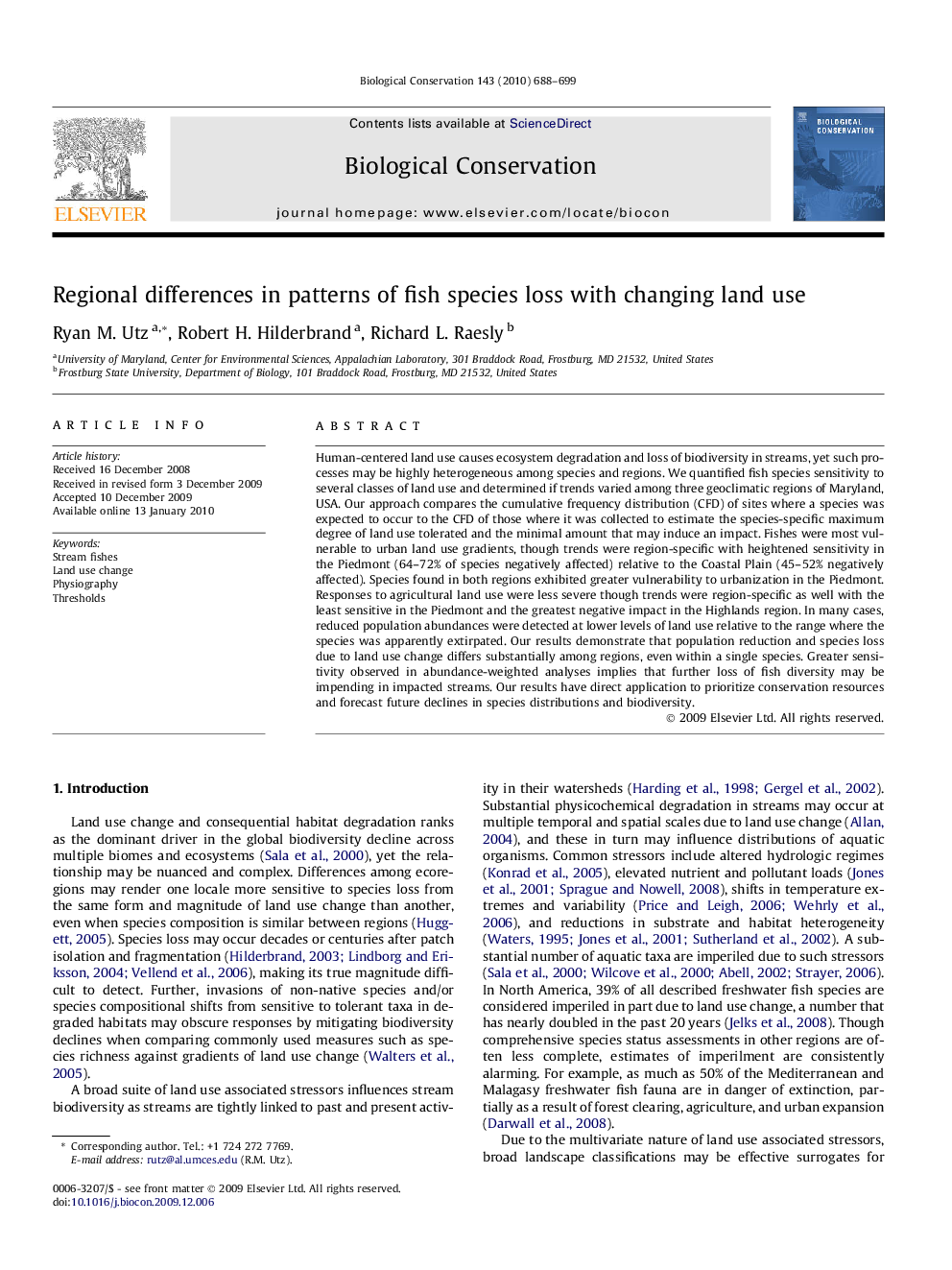| Article ID | Journal | Published Year | Pages | File Type |
|---|---|---|---|---|
| 4386118 | Biological Conservation | 2010 | 12 Pages |
Human-centered land use causes ecosystem degradation and loss of biodiversity in streams, yet such processes may be highly heterogeneous among species and regions. We quantified fish species sensitivity to several classes of land use and determined if trends varied among three geoclimatic regions of Maryland, USA. Our approach compares the cumulative frequency distribution (CFD) of sites where a species was expected to occur to the CFD of those where it was collected to estimate the species-specific maximum degree of land use tolerated and the minimal amount that may induce an impact. Fishes were most vulnerable to urban land use gradients, though trends were region-specific with heightened sensitivity in the Piedmont (64–72% of species negatively affected) relative to the Coastal Plain (45–52% negatively affected). Species found in both regions exhibited greater vulnerability to urbanization in the Piedmont. Responses to agricultural land use were less severe though trends were region-specific as well with the least sensitive in the Piedmont and the greatest negative impact in the Highlands region. In many cases, reduced population abundances were detected at lower levels of land use relative to the range where the species was apparently extirpated. Our results demonstrate that population reduction and species loss due to land use change differs substantially among regions, even within a single species. Greater sensitivity observed in abundance-weighted analyses implies that further loss of fish diversity may be impending in impacted streams. Our results have direct application to prioritize conservation resources and forecast future declines in species distributions and biodiversity.
